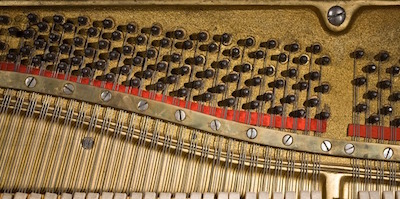Our modern day music classification system divides instruments into wind, strings, and percussion. And while this division has Greek origins dating back a couple thousand years, it has changed slightly from time to time as it moved forward. Plucked string instrument, such as guitars, were often separated from bowed string instruments, such as the violin. Wind instruments that use a reed, woodwinds, are separated from those where the air is set in motion directly by the lips, brass instruments.
 Yet some instruments do not fit neatly into this classification system.
Yet some instruments do not fit neatly into this classification system.
The piano, for instance.
Keyboard instruments are often played in a variety of ways. The piano has strings, but they are struck by hammers. The harpsichord is plucked. A digital piano uses electronics.
So where is a piano placed? In many cases, it isn’t clear if it should be classified as a string instrument or a percussion instrument. In some cases, it is placed in a class of its own.
If you start a debate in the depths of a symphony, many consider the piano to be strictly a percussion instrument.
A piano achieves its sound by hammers striking the strings. This fulfills the primary definition of a percussion instrument, which is defined as a musical instrument played by striking by the hand or a handheld or pedal operated stick.
But tone from a piano is created from the vibration of the strings, fulfilling the definition of a stringed instrument, which is defined as a musical instrument that produces sound by vibrating strings. The strings are under appropriate tension, and are set into vibration by being plucked, strummed, struck or bowed.
So which is it, string or percussion?
Do we have to choose?

